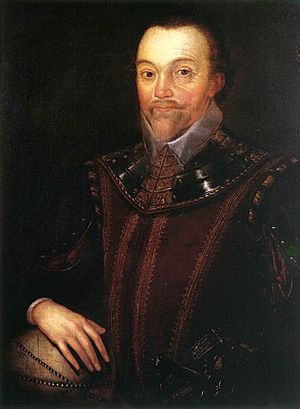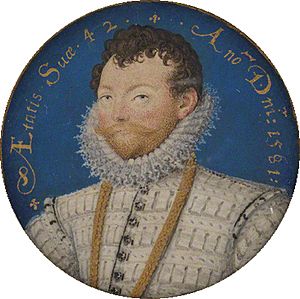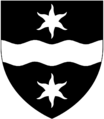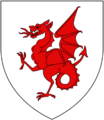Francis Drake facts for kids
Quick facts for kids
Francis Drake
|
|
|---|---|

Sir Francis Drake, oil painting by Marcus Gheeraerts the Younger in Buckland Abbey (after 1590)
|
|
| Born | c. 1540 |
| Died | 28 January 1596 (aged 55) Portobelo, Colón, Panama
|
| Spouse(s) |
|
| Piratical career | |
| Nickname | El Draque (Spanish, "The Dragon") |
| Type | Privateer |
| Allegiance | Kingdom of England |
| Years active | 1563–1596 |
| Rank | Vice admiral |
| Base of operations | Caribbean Sea |
| Commands | Golden Hind (previously known as Pelican) Bonaventure Revenge |
| Battles/wars | Anglo–Spanish War Battle of Gravelines |
| Wealth | Est. Equiv. US$156.3 million in 2022; #2 Forbes top-earning pirates |
| Signature | |
 |
|
Sir Francis Drake (around 1540 – 28 January 1596) was a famous English sea captain, privateer, and explorer during the time of Queen Elizabeth I. A privateer was like a legal pirate, allowed by their government to attack enemy ships and towns. Drake is most famous for being the first English captain to sail all the way around the world in one journey, from 1577 to 1580.
Queen Elizabeth I made Drake a knight in 1581, which means he was given the title "Sir." He also became the mayor of Plymouth that same year. Later, as a vice admiral, he was a key leader in the English fleet that defeated the powerful Spanish Armada in 1588. Drake died in January 1596 from an illness called dysentery after an attack on San Juan, Puerto Rico.
While the English saw Drake as a hero, the Spanish called him El Draque, meaning "The Dragon," and considered him a pirate. It's said that King Philip II of Spain offered a huge reward for his capture or death.
Contents
Early Life and Beginnings at Sea
Francis Drake was born in Tavistock, Devon, England. His exact birth date isn't known, but historians believe he was born around 1540. He was the oldest of twelve sons. His father, Edmund Drake, was a farmer.
Because of religious problems in England around 1549, Drake's family moved from Devon to Kent. There, his father worked for the King's Navy. Young Francis began his life at sea as an apprentice to a ship master. This master sailed a small ship, called a barque, carrying goods along the coast and to France. Drake was so good at his job that when the master died, he left the ship to Drake. This was how Drake started his own career as a sea captain.
Family Life
Francis Drake married Mary Newman in July 1569 in Plymouth. She passed away twelve years later in 1581. In 1585, Drake married again to Elizabeth Sydenham. She was the only child of Sir George Sydenham, a well-known figure in Somerset.
Sailing Around the World (1577–1580)
After a successful trip to Panama, Queen Elizabeth I sent Drake on a new adventure in 1577. His mission was to explore and challenge the Spanish along the Pacific coast of the Americas. Drake had a plan that had been thought of by Sir Richard Grenville.
Drake set sail from Plymouth on 13 December 1577, with five ships and 164 men. His main ship was called Pelican, but he later renamed it Golden Hind. He also added a Portuguese merchant ship, Mary, which he captured off the coast of Africa. The captain of this ship, Nuno da Silva, joined Drake's crew. He knew a lot about sailing in South American waters.
Drake's journey was tough. He lost two ships, Christopher and Swan, because he didn't have enough men to sail them. He landed at a bay called Puerto San Julián in what is now Argentina. Here, Drake had a serious disagreement with one of his officers, Thomas Doughty. Drake decided to stay in San Julian for the winter before trying to sail through the difficult Strait of Magellan.
Defeating the Spanish Armada
In 1588, Drake was a vice admiral in the English fleet. He played a very important role when England fought against the huge Spanish Armada, which was trying to invade England. As the English ships chased the Armada, Drake captured a Spanish ship called Nuestra Señora del Rosario. This ship was carrying a lot of money meant for the Spanish army.
On the night of 29 July, Drake and his commander, Lord Howard, used fire-ships against the Spanish fleet. These were old ships set on fire and sent towards the enemy. This caused the Spanish captains to panic and break their formation, sailing out of Calais into the open sea. The next day, Drake was part of the important Battle of Gravelines, where the English won.
A famous story says that before the battle, Drake was playing a game of bowls on Plymouth Hoe. When he was told the Spanish fleet was coming, he supposedly said there was plenty of time to finish the game and still beat the Spanish. This story might not be true, but it shows Drake's calm and confident attitude.
Drake's Legacy and Impact
Sir Francis Drake has left a lasting mark on history and culture.
In Valparaíso, Chile, there's a place called Cueva del Pirata (Pirate's Cave). Local stories say that when Drake attacked the port, he hid treasure in this cave because he couldn't take it all on his ship. Some legends even say a guard was left chained there to wait for Drake's return, which never happened.
Many places in the UK are named after Drake, especially in Plymouth, Devon. These include the naval base HMS Drake, Drake's Island, and a shopping center called Drake Circus. There's also a statue of Drake on Plymouth Hoe. The Sir Francis Drake Channel is a well-known waterway in the British Virgin Islands.
In recent times, some places named after Drake in California have been renamed. This happened because of his connection to the Atlantic slave trade and colonialism. For example, Sir Francis Drake High School changed its name to Archie Williams High School. A statue of Drake in Larkspur, California was also removed.
Drake's will was once part of a big scam in the 1920s and 1930s. A man named Oscar Hartzell tricked many people into believing that Drake's fortune was being held by the British government. He told people with the last name Drake that they could get a share if they paid him. The scam ended when a copy of Drake's real will was shown in court, proving there was no such fortune.
The legend of Drake's Drum is a popular part of English folklore. The story says that if England is ever in danger, Drake's drum will beat, and he will return to help.
Francis Drake is also featured in popular culture. He is a main character in the video game series Uncharted, where the hero, Nathan Drake, claims to be his descendant. There was also a TV series about him called Sir Francis Drake in the 1960s.
Images for kids
-
A replica of the Golden Hind at Bankside in London
-
Buckland Abbey in Devon, where Drake lived
-
An 18th-century painting of the Spanish Armada
See also
 In Spanish: Francis Drake para niños
In Spanish: Francis Drake para niños


















